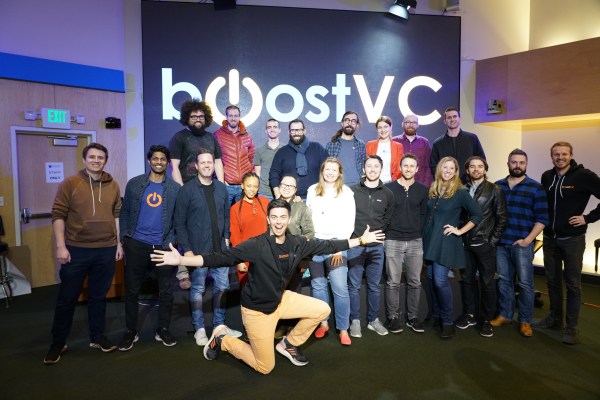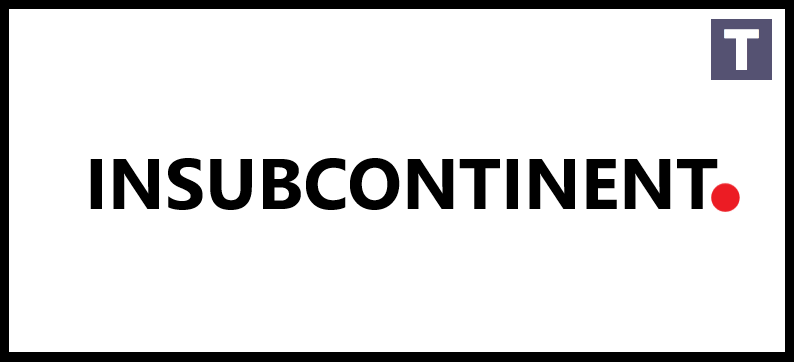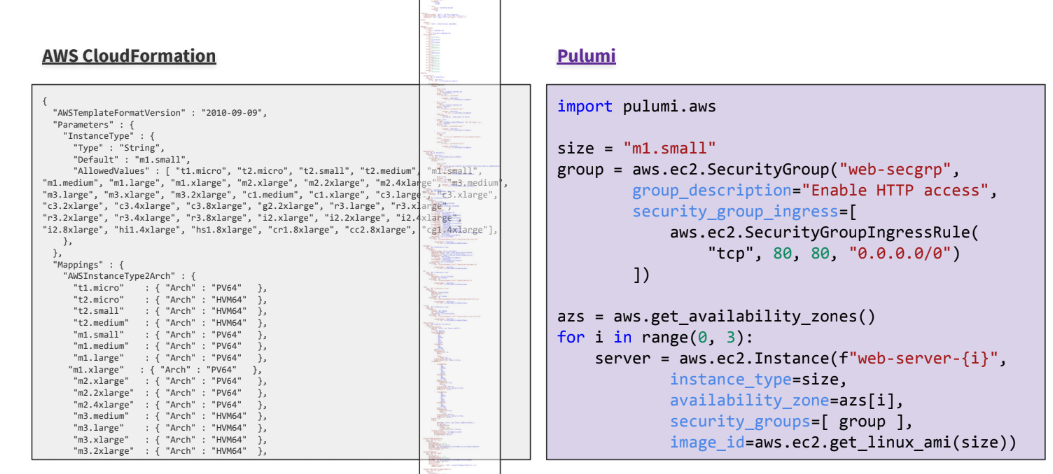Music
Trailers
DailyVideos
India
Pakistan
Afghanistan
Bangladesh
Srilanka
Nepal
Thailand
Iraq
Iran
Russia
Brazil
StockMarket
Business
CryptoCurrency
Technology
Startup
Trending Videos
Coupons
Football
Search
Download App in Playstore
Download App
Best Collections
Technology

BoostVC has been an accelerator known for the unconventional bets it has chased — and is still chasing — trends like blockchain and AR/VR that other investors have long sworn off. Its accelerator program has been as classical as it comes, offering perks like office space and living quarters for a relatively tight group of admitted founders.
With the pandemic crisis, BoostVC founder Adam Draper has had to make some adjustments to his latest batch, including a digital demo day taking place next week. Venture capital firms have proven reticent in the past to invest in founders they hadn&t met in person, but the quarantine has forced early-stage investors to step out of comfort zones. Draper hopes that a Zoom-based Demo Day focused on allowing the 13 companies to present and then break off into their own smaller Q-A subgroups will allow investors to feel more comfortable backing the startups remotely.
BoostVCdigital demo day takes place on April 28.
A smaller group of 13 startups will certainly make logistics easier for Boost; Y Combinatorlatest batch tapped out at 240 companies. The current class is BoostVCsmallest in recent memory, the result of a format change last year that boosted individual investments to $500K per startup (for a 15% equity chunk) and shrunk the total pool. The change was an attempt by Draper and his team to differentiate the acceleratoroffering and attract founders solving more capital-intensive problems.
The pandemic threw them a curveball, but Draper hopes their tighter group can sell investors next week.
&I can&t say itall gone according to plan, we&re a very physical accelerator and we&ve had to completely adapt,& Draper says. &But we&ve gotten the value of getting to see how Y Combinator and 500 Startups did their demo days.&
The latest group includes plenty of bets in Boostfamiliar zones — blockchain, AR/VR, hardware and logistics. Boost has invested more than $50 million in startups since its founding in 2013.
An ebullient Draper tells TechCrunch that BoostVC has just closed a $40 million fund — its fourth and largest to date — to bankroll future batches of startups going through its accelerator. The new fund is backed by Devonshire Investors and ECMC. The firmlast fund, which clocked in at around $38 million, closed in 2018.
Draper is hopeful that Boostnext &tribe& can shift back to its in-person format when in kicks off in late August. If not, he hopes his team can apply what they&ve learned to help incubate a new class of startups and ready them for an uncertain market.
- Details
- Category: Technology Today
Trading and IPOs on the New York Stock Exchange will continue through any economic tremors the COVID-19 crisis may cause.
Thataccording to the NYSEvice chairman, John Tuttle, who spoke to TechCrunch on business continuity and how the coronavirus pandemic could impact future operations of the worldlargest stock market.
Like much of the commercial universe, COVID-19 has induced some never-before events for the securities exchange, while testing the 228-year-old organizationtech and contingency planning.
During the second week of March — when a U.S. coronavirus outbreak appeared inevitable — markets began to react to the economic damage COVID-19could cause.
For the remainder or March, trading on the NYSE was halted an unprecedented four times after market drops triggered internal circuit breakers put in place to stem panic sell-offs.
After the DOW lost 30% of its value, there was fear of a sustained stock free-fall and calls from many corners — including big tech and Congress — to shutdown U.S. stock markets.
Simply turning off the trading switch for a company with over 2,000 company listings wasn&t an option then, and is an unlikely one moving forward, for a number of reasons, according to Tuttle.
&Itincredibly important to keep the markets open during this period. While people may not like the prices…they know that they can access the marketplace,& he told TechCrunch on a call.
Equities trading goes beyond 401(k) valuations, he noted, to serve a broader function to companies, investors and the economy — namely that of providing liquidity and access to capital.
&The ability as an institutional investor or an individual investor to exchange your shares for cash or cash for shares is incredibly important to maintaining confidence in the financial marketplace,& he said.
For companies, a market shutdown would &limit their opportunities to access the capital they need to keep their businesses functioning,& according to Tuttle.
He noted that since the U.S. COVID-19 outbreak, two NYSE listed companies — Slack and Carnival Cruise Lines — have tapped debt and equities markets for funding.
Rather than shut down completely, the New York Stock Exchange has closed its 11 Wall Street location and trading floor to all but a skeleton crew. NYSE staff continue to operate on a remote basis, with traders accessing the exchangesystems and virtual board electronically.

Image Credits: Spencer Platt/Getty Images
The organization has an internal engineering team and has developed its own trading and communications platform called Pillar.
&Our philosophy is we want to design, build and own the technology that powers our marketplace,& said Tuttle.
The NYSE will continue to manage any market volatility caused by the COVID-19 pandemic through the circuit-breaker system — implemented by the SECfor large U.S. trading platforms after the Black Monday stock crash of 1987.
There are three circuit-breaker thresholds that switch on — and automatically pause trading — for significant declines in the S-P 500previous day value: a Level 1 (for a 7% drop), Level 2 (at 13%) and Level 3 (at a 20% decline), per info provided to TechCrunch by the NYSE.
&They are in place as protection to our markets. I think thatan important part of the U.S. marketplace… we&ve built a system where we can be open rain or shine. Good or bad and allow people and firms access to capital,& said Tuttle.
On raising funds through public listings, the NYSEremote work scenario hasn&t restricted that option.
&When it comes to the IPO pipeline…we are open for companies to access the marketplace and we can execute IPOs in a purely electronic manner. We can even do it in a completely remote manner,& said Tuttle.
He noted that the listing market had pretty much ground to a halt since the COVID-19 outbreak in the U.S.
&But we have seen companies that are less impacted by the macro environment continue to move forward with their IPO plans,& Tuttle said.
&Some of the healthcare and biotech companies that are in the pipeline are still planning to come to market in the relatively near term.&
The NYSE is evaluating on a day to day basis the physical re-opening of the trading floor and returning the bulk of its staff to 11 Wall Street.
&We&re going to continue to monitor events and when we feel like we can bring people back and we&re comfortable with their safety and well-being, we&ll open,& said Tuttle.
Whenever that occurs — from an operating perspective — the NYSE is likely to join a list of companies that pivot to a more remote work stance post-COVID-19.
&Historically, we are a New York, Wall Street, work from the office type company. In a very short period of time we shifted to a 100% remote company,& said Tuttle.
&Thatsomething of a transformation in the New York Stock Exchange that for the first time in 228 years we&ve operated the markets and the company remotely.&

- Details
- Category: Technology Today
Read more: NYSE trading as well as IPOs won't stop via COVID-19 says vice chairman
Write comment (92 Comments)Seattle-based Pulumi has quickly made a name for itself as a modern platform that lets developers specify their infrastructure through writing code in their preferred programming language — and not YAML. With the launch of Pulumi 2.0, those languages now include JavaScript, TypeScript, Go and .NET, in addition to its original support for Python. Italso now extending its reach beyond its core infrastructure features to include deeper support for policy enforcement, testing and more.
As the company also today announced, it now has over 10,000 users and more than 100 paying customers. With that, itseeing a 10x increase in its year-over-year annual run rate, though without knowing the exact numbers, itobviously hard to know what exactly to make of that number. Current customers include the likes of Cockroach Labs, Mercedes-Benz and Tableau .
When the company first launched, its messaging was very much around containers and serverless. But as Pulumi founder and CEO Joe Duffy told me, today the company is often directly engaging with infrastructure teams that are building the platforms for the engineers in their respective companies.

As for Pulumi 2.0, Duffy says that &this is really taking the original Pulumi vision of infrastructure as code — using your favorite language — and augmenting it with what we&re calling superpowers.& That includes expanding the productoverall capabilities from infrastructure provisioning to the adjacent problem spaces. That includes continuous delivery, but also policy-as-code. This extends the original Pulumi vision beyond just infrastructure but now also lets developers encapsulate their various infrastructure policies as code, as well.
Another area is testing. Because Pulumi allows developers to use &real& programming languages, they can also use the same testing techniques they are used to from the application development world to test the code they use to build their underlying infrastructure and catch mistakes before they go into production. And with all of that, developers can also use all of the usual tools they use to write code for defining the infrastructure that this code will then run on.
&The underlying philosophy is taking our heritage of using the best of what we know and love about programming languages — and really applying that to the entire spectrum of challenges people face when it comes to cloud infrastructure, from development to infrastructure teams to security engineers, really helping the entire organization be more productive working together,& said Duffy. &I think thatthe key: moving from infrastructure provisioning to something that works for the whole organization.&
Duffy also highlighted that many of the companylarger enterprise users are relying on Pulumi to encode their own internal architectures as code and then roll them out across the company.
&We still embrace what makes each of the clouds special. AWS, Azure, Google Cloud and Kubernetes,& Duffy said. &We&re not trying to be a PaaS that abstracts over all. We&re just helping to be the consistent workflow across the entire team to help people adopt the modern approaches.&
- Details
- Category: Technology Today
Read more: Pulumi brings assistance for even more languages to its infrastructure-as-code system
Write comment (95 Comments)Facebook has already come under fire for hosting groups organizing anti-quarantine protests in response to government lockdowns amid the coronavirus outbreak, and those promoting fake coronavirus cures and misinformation. Now ittrying to figure out what to do with the growing number of COVID-19 community groups on its platform worldwide. In hopes of better educating group admins, the company today began its first-ever digital event for those running COVID-19 groups. The event, &Community Connect: Navigating COVID-19,& takes place April 21-23 depending on timezone, and focuses on best practices for COVID-19 groups.
In the English portion of the event that ran today, Facebook CEO Mark Zuckerberg, as is typical, positioned Facebook as a force for good.
&Ittimes like this when strong communities are needed most. With everything going on, I think the power of online communities in particular has really shined through and been clear, and you all are at the heart of this,& he said. &You are running groups that have helped to organize grocery delivery to older neighbors, groups where parents can share homeschooling tips, groups to source equipment and lifesaving information for healthcare workers, groups to support people who are now out of work or who have seen their businesses take a really big hit,& he continued.
&Even if not organizing directly around coronavirus yourself, your groups have provided an escape for people or a sounding board for people who need support and comfort during this time,& Zuckerberg added.
However, Facebook Groups have also contributed to the spread of misinformation, despite Facebookefforts to keep this content off its platform.
Just yesterday, for example, The WSJ reported on data from watchdog group NewsGuard which found that coronavirus misinformation and conspiracy theories remained highly available across Facebook, with some posts seeing thousands of likes and comments. The report also found that sites with millions of Facebook followers have been touting fake cures. Others spread conspiracies so bizarre they&d be laughable except for the fact they&ve led to real-world crime — as in the case of arson attacks on cell towers by those convinced a virus is spread by cell signals.
An earlier study by a different group examined over 100 pieces of debunked COVID-19 related misinformation, and found these posts were shared 1.7 million times and viewed 117 million times between January 21 and April 7, VICE recently reported. When the report was published, 41% of the content was still live — indicating a failure in Facebookpromises to remove this sort of COVID-19 misinformation.
The rapid growth of Facebook Groups as a result of the coronavirus health crisis now makes it even more difficult to get a handle on this sort of content, as many groups operate privately.
In the U.S., more than 4.5 million people joined COVID-19 support groups on Facebook, the company announced today. Over 3 million have done the same in Italy and more than 2 million have in the U.K., Facebook said.
Ittrue that many groups may be focused on community information and support — like those designed to help neighbors, support local businesses or give to charitable organizations, for example. But Facebook groups can also be a private forum where misinformation is easily shared, without fact-checking.
And in a pandemic situation, misinformation and fake medical advice becomes even more dangerous as people risk their own health and put others at risk, as well. These fake cures are not dubious supplements being hawked by your high school friend in an MLM — they&re useless and sometimes even dangerous fake cures — like drinking bleach or snorting cocaine.
Facebook has at least been trying to wedge in credible health information into groups.
Recently, it added a prompt for group admins to share live broadcasts about COVID-19 from credible health organizations like the WHO and official state and country health departments. And in partnership with the CDC, Facebook developed learning units based on CDC guidelines that adminsare able to add to theirgroup.
Coronavirus group members will also see an educational pop-up in thegroup itself, directing them to credible information from health organizations. Plus, coronavirus-related search will point to this same information.
&I can promise you that I can speak for everyone at Facebook when I say that it is our top priority to build products that can help everyone right now,& said Fidji Simo, head of Facebook App, at todayevent. &Whether it is helping make sure you see the latest accurate information from credible health organizations, to helping to provide economic opportunity and stability to businesses who are struggling, to helping facilitate the growth of online communities at the local and global level,& Simo added.
Facebookreal top priority, however, has been its money-making ad business, which captures a significant portion of its engineering resources, while moderation and fact-checking get outsourced. Without regulatory penalties for allowing dangerous information to spread, that will likely remain unchanged.
Facebook says it plans to host a number of digital events for group admins in the months ahead.

- Details
- Category: Technology Today
Amid the COVID-19 pandemic, the tech industry has yet again found itself in a vulnerable state.
As we saw in the dot-com era, when the economy takes a hit, so do companies, and they need to make critical decisions — whether itlaying off or furloughing employees, pausing operations in select markets, taking on additional debt or some combination of all four.
Given the disproportionate impact the coronavirus has on people of color and low-income communities, the tech industry — a predominantly white male ecosystem that struggles to foster diversity and inclusion — has an opportunity to approach this new reality through an equitable lens.

Kapor CapitalFreada Kapor Klein and Mitch Kapor
As part of Extra Crunch Live, our new virtual speaker series with trusted tech experts, I&ll talk to Kapor Capital Freada Kapor Klein and Mitch Kapor on Tuesday, April 28 at 10 a.m. Pacific/1 p.m. Eastern. Full details are at the bottom of this post.
Freada Kapor Klein, a founding partner at Kapor Capital, has advocated for diversity and inclusion in the tech industry for more than a decade. Through Kapor Capital, she invests in startups focused on social impact and closing gaps for people of color, as well as folks in low-income communities. Kapor Klein is also a founding member of Project Include, which works to help founders and investors implement effective diversity and inclusion strategies.
Mitch Kapor, also a founding partner at Kapor Capital, similarly invests in startups geared toward social good. Prior to Kapor Capital, he co-founded The Electronic Frontier Foundation, a nonprofit that protects digital rights and civil liberties. Together, Mitch and Freada also lead the Kapor Center for Social Impact to remove barriers in education and in the workplace.
I&m looking forward to chatting with Freada and Mitch about how startups should approach this ever-changing new reality, strategies for helping companies eliminate inequities and the differences and similarities between how the recent pandemic and the dot-com era are shaping the tech industry.
During the call, audience members will be able to ask questions, but to join the conversation, you&ll need to be an Extra Crunch member — if you&re not already a subscriber, you can sign up here.
- Details
- Category: Technology Today
Read more: Bonus Crunch Live: Navigating the pandemic with a fair lens
Write comment (92 Comments)
There are few more messages more timely than the opening line, &Dance your cares away, worryfor another day& (or is it &worries?&). Today the familiar Fraggle Rock bass line returns, along with the titular felt underground dwellers, as the first of a new series of mini-episodes hits Apple TV+.
Applestreaming service will post free short episodes of Fraggle Rock: Rock On! each Tuesday, starring a familiar parade of Muppets, including Gobo, Red, Boober, Mokey, Wembley, Uncle Traveling Matt and those poor, hardworking Doozers.
Arguably even more interesting than the show itself is the circumstances of its production. As the global COVID-19 pandemic has brought television production to a screeching halt, the showproducers have taken to creating the show remotely. & In accordance with the Covid-19 ‘Safer at Home& guidelines,& Apple writes in a release, &Fraggle Rock: Rock On! is all shot on iPhone 11 phones from the homes of the production team and individual artists from all over the U.S.&
If nothing else, the current pandemic has proven how creative people can be with an internet account and a lot of free time. Italready has already reshaped how we view musical and comedy performances as a long parade of creatives have opened their homes to the internet. A new Fraggle Rock series demonstrates what can be done when you add a bit of production values into the mix.
The series joins a number of familiar childhood properties being revamped for the platform, including Peanuts (Snoopy in Space) and Ghostwriter.
- Details
- Category: Technology Today
Read more: Apple's brand-new Fraggle Rock series was fired on iPhones in its makers' houses
Write comment (90 Comments)Page 918 of 1437

 15
15





